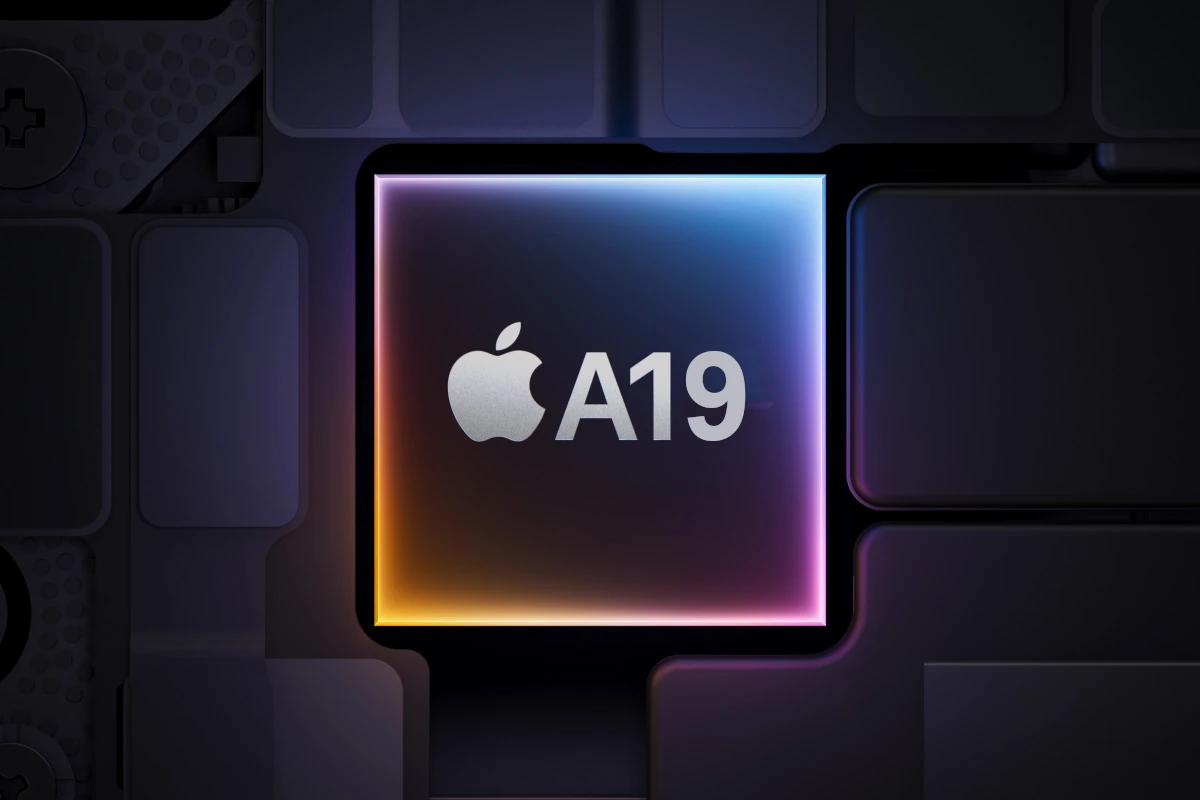Apple continues to focus on improving mobile performance. There are rumors about the A19 and A19 Pro chips, which are expected to power the iPhone 17 series in 2025. If these rumors are accurate, the new chips could change what smartphones can do, thanks to advanced 3nm technology and Apple’s commitment to innovation. The A19 and A19 Pro chips will be made using TSMC’s 3nm process technology, which should bring major improvements in performance and efficiency.
Apple A19 and A19 Pro Chips: Powering the iPhone 17
Apple will be unveiling all-new A19 and A19 Pro chips, built on TSMC’s advanced 3nm technology, for the 17 series phones. These chips will elevate the performance of the upcoming lineup significantly especially when it comes to Ai and Apple Intelligence.
A19 and A19 Pro: What to Expect
While Apple hasn’t officially confirmed any details, industry analysts and leaks suggest that the A19 and A19 Pro chips will be manufactured using TSMC’s N3P process. This third-generation 3nm technology is expected to deliver improved performance and power efficiency compared to the N3B and N3E processes used in the A17 Pro and A18 chips, respectively.
The A19 Pro chip is likely to be reserved for the higher-end iPhone 17 Pro models, while the standard A19 chip will power the iPhone 17 and iPhone 17 Plus.
Performance and Efficiency Gains
The shift to the 3nm N3P process could bring notable improvements:
- Faster Performance: Increased transistor density allows for more processing power, leading to faster app launches, smoother multitasking, and enhanced gaming performance.
- Improved Battery Life: Greater power efficiency means the chips can deliver the same or better performance while consuming less energy, potentially leading to longer battery life.
- Enhanced Graphics: The A19 chips are likely to feature upgraded GPUs, enabling even more impressive graphics performance for gaming and other visually demanding tasks.
New Features and Capabilities
The A19 chips could also enable new features and capabilities in the iPhone 17 series, such as:
- Advanced AI Processing: Dedicated neural engines could power more sophisticated AI features, including enhanced Siri capabilities, improved camera processing, and more personalized experiences.
- Enhanced Camera Features: The chips may support higher-resolution camera sensors and enable new computational photography features.
- Improved Security: Enhanced security features could further protect user data and privacy.
Release Timeline
Apple typically announces new iPhones in September, so we can expect the iPhone 17 series, with the A19 and A19 Pro chips, to be unveiled around September 2025. Currently the iPhone 17 is expected to be announced on September 8, 2025 and released on September 19, 2025.
| Chip | Expected Devices | Process Technology | Anticipated Improvements |
|---|---|---|---|
| A19 | iPhone 17, iPhone 17 Plus | 3nm N3P | Performance, efficiency, graphics |
| A19 Pro | iPhone 17 Pro, iPhone 17 Pro Max | 3nm N3P | Performance, efficiency, graphics, AI processing |
The A19 and A19 Pro chips are shaping up to be significant upgrades, promising to bring impressive performance, efficiency, and new capabilities to the iPhone 17 lineup.
Short Summary:
- The new A19 series chips utilize TSMC’s latest 3nm process, resulting in enhanced speed and efficiency.
- Improvements include better performance, improved power efficiency, and advanced AI capabilities.
- The iPhone 17 ‘Air’ is expected to feature a remarkably thin design, competing with similar models from rivals.
Apple is set to introduce its most powerful chips yet, the A19 and A19 Pro, designed for the upcoming iPhone 17 models, including the standard version and the ‘Air’ model. Tech analyst Jeff Pu from Haitong International Securities reports that these new processors will utilize TSMC’s advanced third-generation 3nm technology, known as “N3P.” This shift to N3P is expected to significantly enhance the performance of the devices compared to current models, which use the second-generation 3nm technology, or “N3E,” found in the A18 and A18 Pro chips of the iPhone 16 series. As noted by MacRumors, the transition to the N3P process will increase the density of transistors, leading to improved computational power and energy efficiency. While these improvements build on the already impressive capabilities of the existing chips, they are expected to deliver notable advancements in performance during demanding tasks such as gaming, video editing, and augmented reality applications.
“With the N3P technology, we expect the A19 and A19 Pro chips to showcase performance boosts of up to 15% and power efficiency improvements of up to 30%,” Pu remarked, suggesting that the changes could lead to longer battery life and cooler device operation.
Previous predictions also indicate that TSMC may begin mass production of these new chips in the latter half of 2024, although details regarding production yields and potential manufacturing challenges remain sparse. Industry insiders suggest that Apple is striving to ensure a reliable supply chain for the anticipated release, minimizing the risk of delays that have historically plagued the tech giant’s product launches.
The design of the iPhone 17 Air is generating excitement, with rumors suggesting it may be the slimmest iPhone to date, potentially measuring less than 6mm in thickness. This would surpass Apple’s previous record with the iPhone 6, which had a thickness of 6.9mm. The competitive landscape is also heating up, with Samsung rumored to be developing a counterpart model, the Galaxy S25, meant to rival the iPhone 17 Air directly.
Chip Overview: A19 and A19 Pro
The A19 and A19 Pro chips represent a significant leap in Apple’s silicon evolution. As the company continually refines its processors, each new generation builds on the successes of its predecessors. The A19 series is expected to reinforce Apple’s position in the mobile device market by integrating advanced features that enhance user experience across its product lineup.
Key Advancements
- Performance Enhancements: Up to 15% increase in task processing speed compared to the A18 series chips.
- Energy Efficiency: Designed to consume approximately 30% less power, promoting longer battery life.
- AI Capabilities: An upgraded Neural Engine is anticipated to enhance machine learning tasks and improve overall device functionality.
Each component of the A19 series has been meticulously crafted to redefine the mobile computing experience. With a focus on performance, the integration of advanced AI technologies allows the chips to facilitate real-time processing for tasks such as complex computational photography and immersive augmented reality experiences.
“Apple is not just targeting speed; they are also aiming for a new standard in power efficiency,” pointed out one industry analyst, highlighting the environmental considerations tied to the evolution of Apple’s chip technology.
Broader Applications Across Platforms
The benefits of the new A19 and A19 Pro chips will extend beyond the iPhone 17 series, signaling an era of enhanced performance across various Apple devices, including iPads and Macs. The upgrades in processor technology reinforce Apple’s commitment to providing seamless integration across its ecosystem. For instance:
- iPads: Users can anticipate significant improvements in computational power enabling smoother multitasking and superior performance in creative applications.
- Macs: Although traditionally utilizing M-series chips, advancements in the A19 Pro technology may eventually influence future iterations of Apple’s Mac processors, promising increased speed and efficiency.
As Apple continues to invest in chip manufacturing, the A19 series paves the way for unprecedented performance in mobile technology while exerting pressure on competitors to keep pace. Firms such as Qualcomm and Samsung will need to expedite their innovation cycles to match the capabilities that Apple is set to offer.
Challenges Ahead
While the prospects of the A19 and A19 Pro chips sound promising, challenges in the production landscape remain. Manufacturing chips with cutting-edge technology like N3P incurs higher costs, which could impact retail pricing and ultimately affect Apple’s profit margins. Balancing these elements will be crucial as Apple navigates the dynamics of the semiconductor market.
Future Outlook for Apple Silicon
The introduction of the A19 Pro N3P chip serves as a foundational step in Apple’s ongoing quest for technological excellence. As the tech landscape evolves, the company plans to progress toward even smaller process nodes, including a potential shift to TSMC’s 2nm technology for future iterations, such as the A20 chip anticipated for the iPhone 18 models.
As many features hinge on the improved processing power and energy efficiency of the A19 series, users can expect transformative experiences. With a focus on artificial intelligence and enhanced graphical capabilities, the A19 Pro chip is set to provide devices capable of delivering more sophisticated applications that redefine user interaction.
The Impact of A19 Pro on User Experience
For consumers, the implications of the A19 Pro N3P chip are profound. By harmonizing greater processing capabilities, energy efficiency, and advanced AI functionalities, Apple is demonstrating a commitment to elevating the standard of mobile computing.
- Battery Life: Extended battery life enhances usability, allowing users to engage with their devices longer without interruption.
- Performance under Load: Devices will maintain optimal temperatures and performance, even during resource-intensive tasks like video editing or gaming.
- AUGMENTED REALITY: The integration of enhanced AR capabilities promises to unlock new experiences in daily life, spanning from education to entertainment.
As the tech community awaits more details regarding the iPhone 17 lineup, the excitement for the incorporation of the A19 and A19 Pro chips continues to build. Apple’s commitment to innovation assures users that its devices will remain at the forefront of technology while setting the benchmarks for future developments within the industry.







